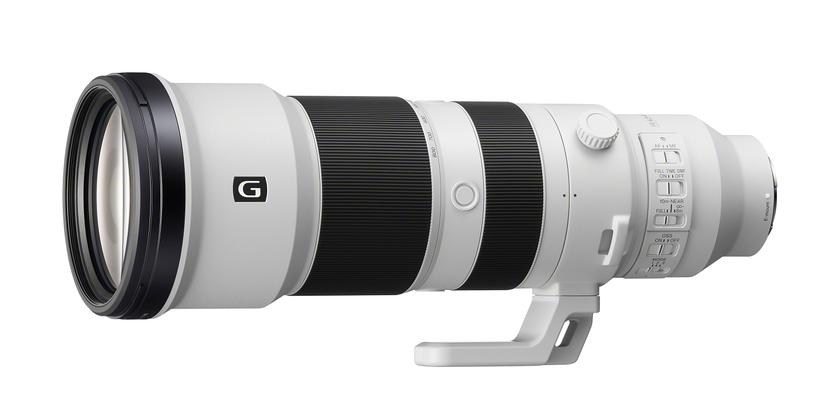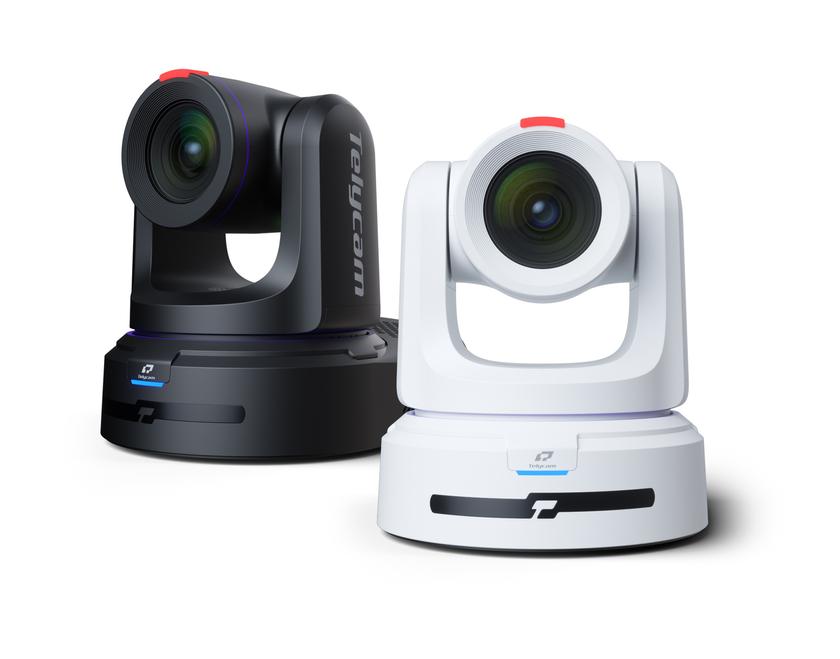Fostex’s RM-3 Stereo Rack Monitor

The Fostex RM-3 stereo rack monitor
There’s always been a requirement for multiple audio monitoring points around a TV station or production facility. However, only fairly recently have broadcast- grade video monitors come equipped with audio circuitry and speakers. Early on in my career, if you wanted an audio monitor, you built it yourself. I certainly put together my share. Thankfully, homebrewing of monitor amps pretty much ended when commercial units began to appear in the 1980s. The Fostex 6301 “black brick” was one of those and found its way into just about every broadcast operation. While the 6301 line is still around, Fostex has now created a somewhat different unit, the RM-3, which does quite a bit more than its 6301 predecessor.
FEATURES
As its designation implies, the RM-3 is a rack-mounted device, occupying a single RU and measuring about 11-inches deep. The finish is flat-black finish and the weight is about eight pounds. It’s powered from 100–240 VAC sources. The rear panel contains looping (in/out) XLR connectors for each channel, as well as a pair of 1/4-inch T/S jacks. Two additional XLRs (male and female) are provided for looping 110-Ohm balanced AES digital audio (44.1–96 kHz sampling rate) through the unit. There’s a termination switch for the digital input if you don’t plan to use the looping capability, and adjacent to this is a row of eight DIP-switches for setting various operating modes; more about which later. There’s also an AC power switch.
The front panel features several controls, a pair of 24-LED digital level meters, and a status display to indicate various modes of operation (left-only, right-only, left and right summed, and stereo). There’s also an input selector (analog/digital), along with a volume control that also serves as a muting button, and a 1/4-inch headphone jack.
The level meters include a “digit” for indicating the presence of an input signal, and a peak “over level” indicator as well. Meters can be set for VU, VU plus peak, VU plus peak hold, or peak plus peak hold indications. (Selection is via the rear panel DIP-switches mentioned earlier.) These DIP-switches also allow adjustment of a “zero” or “+4” dB environment, display brightness level, music/speech audio response, fallback volume level when muted, and “auto standby” operating mode on/off. (When in “auto standby,” the unit detects periods of inactivity and cuts power consumption to a mere 0.5 Watt.)
The RM-3 contains dual 10-Watt amplifiers driving a pair of 110 x 40 mm (about 4.3 x 1.6-inches) built-in elliptical speakers. Frequency response is specified at 200 Hz to 20 kHz and the “full tilt” sound pressure level is rated at 84 dB/W one meter from the unit.
IN USE
After unpacking the RM-3 and connecting AC, I flipped on the power switch. This illuminated the front panel meters and other indicators, but I didn’t hear the clicks, pops, or other noises I’ve become accustomed to when powering up audio gear. There was no sound even with the volume control up all the way—no noise, no hum; nothing. I first thought I’d received a broken unit and would have to request another. However, before heading for the telephone, I connected my trusty Audio Technology 1700 test set, set up a 1 kHz sine wave output, and was rewarded by pure tone from the RM-3’s speakers. (It’s really amazing how quiet this unit is with no input!) After establishing operational status, I then proceeded to “ring it out.”
In this age of “flat from DC to light” audio response claims, Fostex is a bit more honest, offering that the RM-3 responds to frequencies from 200 Hz to 20 kHz. The ideal way to prove or disprove this would be with a calibrated lab mic and anechoic chamber. Possessing neither—and aware that few of us use monitor amps inside anechoic chambers and even fewer of us have ears replicating calibrated microphones—I did the next best thing. I used my ears (not golden, but still adequate to appreciate good audio), to evaluate response. I set the RM-3’s level settings and oscillator output for a comfortable volume level and started the frequency “run.”
Even though I’ve achieved “senior citizen” status, I can still hear upwards of 15 kHz and state quite honestly that the unit produces an output that goes at least that high. After I no longer could hear anything, I continued “walking up” the oscillator frequency while observing the RM-3’s level meters to see if it made the claimed 20 kHz (even if my ears didn’t). The meters indicated that it (the amplifier, anyway) was essentially flat to 20 kHz and I have no doubt that the speakers could deliver high-frequency output well beyond the point where my ears gave up. I kept increasing the frequency while watching the meters and noted that output began to decline at 21 kHz and was just about completely gone at 25 kHz, well beyond the upper end cut-off spec.
After establishing high end cut-off, I moved the oscillator frequency downwards—first in 100 Hz steps until I hit the claimed 200 Hz cut-off, and from there in 10 Hz steps. There was plenty of output at the 200 Hz point and I found this lower end figure is very conservative. The unit did begin to roll off below 200 Hz, but didn’t “bottom” until about 40 Hz—if you have 50 or 60 cycle hum you’re going to hear. it.
Next I wanted to see how much level I could poke into the RM-3 before it distorted. I re-established the 1 kHz tone and increased the oscillator output while listening for signs of clipping. This didn’t happen until I hit +11 dBu, which is right in line with the unit’s meter changing color to red at the +10 step.
I used a Tektronix WFM2300 monitor/test generator outputting AES test tones (and connected through a suitable unbalanced-to-balanced transformer) to see how the RM-3 responded to a digital signal. Initially there was a problem, but it was one of “operator error” rather than with the unit. When I connected the AES signal, the RM-3 briefly produced tone and then went silent. I initially suspected a bad cable, but ruled this out and dug a bit deeper, discovering that the AES “looping” input termination switch was set to feed a downstream unit. As the RM-3 on my bench was the “end of the line,” it wasn’t happy being unterminated. Once this was resolved the unit produced rock-solid output.
As listening to sine wave tones gets boring, I next decided to try out the RM-3 with a music feed. I wheeled a console-mounted Otari two-track tape machine into my lab. connected it, threaded up a commercially released stereo recording, set the RM-3’s “output” switch for stereo, rolled tape and was rewarded with some very pleasant sounds. Despite the closeness of the RM-3’s speakers (only about seven inches apart), the stereo effect was quite good.
I kept the RM-3 on the bench and powered for about two weeks, All the while, it stayed cool as a cucumber down in the root cellar despite an absence of vent openings, fans, or external heat sinks. It’s really “green” in this respect, and this leads me to comment on the power consumption spec which is given as 10 Watts. As each amp is rated at 10 Watts, I wondered if Fostex had produced a “perpetual motion” machine. An email exchange with the company clarified things, stating that in accord with the IEC 60065 safety standard, power consumption is specified when the amplifier is producing “one-eighth of 100 percent non-clipped output power.” So when both channels are driven to max, you will see the Wattmeter climb above 10 Watts.
SUMMARY
I was quite impressed with the RM-3’s performance. It did everything claimed and more. (This is not really surprising though, based on my long experience with the Fostex 6301.) While not a full-range QC monitoring device, the RM-3 is very well suited for use in edit bays, trucks, rack rooms—just about any place a small, cool-running stereo speaker/amp is needed. The 10 Watts per channel output should prove very adequate in all but extremely noisy environments. I don’t think you’ll be disappointed.
James E. O’Neal is technology editor at TV Technology and is also a retired broadcast engineer.
FAST FACTS
APPLICATION
Wherever high-quality stereo audio monitoring in a limited space is needed—edit bays, equipment rooms, ENG/EFP trucks
KEY FEATURES
Compact size, clean audio, very low power consumption, analog and digital inputs
PRICE
$499, MSRP
CONTACT
Fostex International
800-431-2609
www.fostexinternational.com
Get the TV Tech Newsletter
The professional video industry's #1 source for news, trends and product and tech information. Sign up below.
James E. O’Neal has more than 50 years of experience in the broadcast arena, serving for nearly 37 years as a television broadcast engineer and, following his retirement from that field in 2005, moving into journalism as technology editor for TV Technology for almost the next decade. He continues to provide content for this publication, as well as sister publication Radio World, and others. He authored the chapter on HF shortwave radio for the 11th Edition of the NAB Engineering Handbook, and serves as editor-in-chief of the IEEE’s Broadcast Technology publication, and as associate editor of the SMPTE Motion Imaging Journal. He is a SMPTE Life Fellow, and a Life Member of the IEEE and the SBE.













